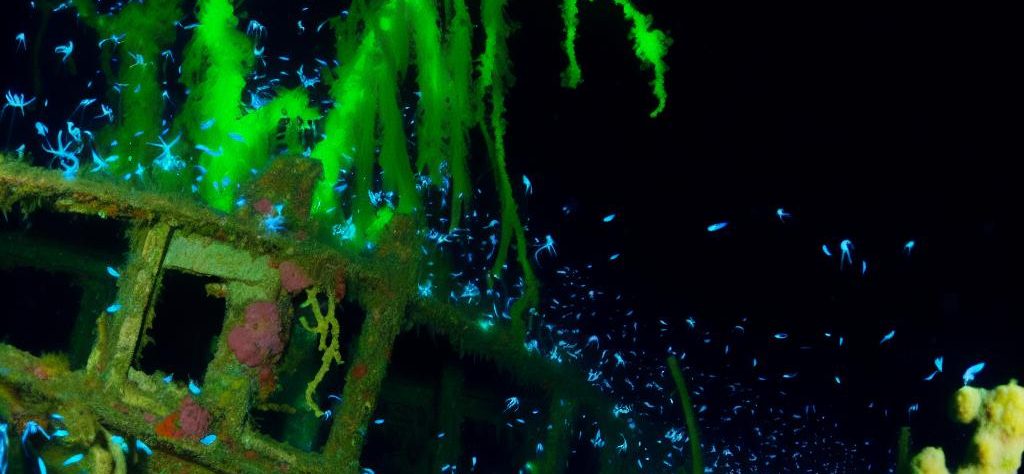The Unique Ecosystems of Philippine Wrecks
The waters surrounding the Philippines are teeming with marine biodiversity, a testament to the country’s rich aquatic ecosystems. This diversity is nowhere more evident than around the numerous shipwrecks scattered in the region. These underwater relics, remnants of historical events including World War II, have transformed over the decades into artificial reefs, fostering vibrant and diverse ecosystems that are crucial for marine life.
The Role of Shipwrecks in Marine Biodiversity
Shipwrecks play a pivotal role in marine biodiversity by providing a hard substrate for marine life to colonize. As soon as a ship settles on the ocean floor, various organisms begin to inhabit the structure. The initial colonization often starts with algae and barnacles, which are key in forming the base of a complex food web. Over time, corals and sponges attach themselves to these structures, creating habitats that support an extensive array of species.
Coral Colonization
Corals are frequently among the first inhabitants of shipwrecks, utilizing the elevated structures to enhance their feeding and breeding potential. Wrecks around the Philippines are commonly adorned with colorful corals, transforming them into vibrant underwater landscapes. These corals play a critical role in marine ecosystems, offering both shelter and food to numerous fish species and other marine organisms.
Corals’ ability to firmly attach to the ships turns these wrecks into intricate networks of marine life. Different species of corals, such as hard corals, soft corals, and gorgonians, provide complex structures that host varied marine species. This rich tapestry of life not only adds to the aesthetic beauty of the wrecks but also plays an essential role in supporting ecological balance. The symbiotic relationship between corals and other marine organisms symbolizes the interconnectedness of life within these submerged ecosystems.
Fish Populations
With the establishment of corals and other sessile organisms on the wreck, a variety of fish species are naturally drawn to the site. Larger predatory fish, such as groupers and snappers, are attracted to the wreck for the abundant prey it harbors. These predators are essential for maintaining the balance of the marine ecosystem by controlling prey populations.
Smaller fish, including a diverse range of reef fish species, find sanctuary among the corals and crevices of the ship’s structure. Wrasses, clownfish, and angelfish are just a few examples of the species that inhabit these wrecks. This congregation of fish is crucial not just for the diversity it represents but also for the ecological functions it supports, such as nutrient cycling and energy transfer within the marine environment.
Fish populations play a significant role in enhancing the ecological richness of the wrecks. Their presence may attract other marine life, further contributing to the vitality of these underwater habitats. The dynamic interactions among various species signify the thriving nature of these submerged ecosystems.
Protection and Conservation Efforts
The presence of shipwrecks enhances marine biodiversity and attracts attention from both divers and conservationists. The ecological importance of these structures has been recognized, leading to efforts to protect them from disturbances like illegal fishing and salvage operations. Protecting shipwrecks is crucial for maintaining their integrity as vital habitats for marine life.
Conservation programs focus on preserving the structural integrity of these wrecks, ensuring they continue to serve as crucial refuges for marine biodiversity. These efforts are not only beneficial for the environment but also essential for maintaining the cultural and historical significance of these underwater relics. Collaborative efforts involving local communities, government agencies, and non-governmental organizations aim to balance conservation with sustainable use.
Protective measures such as designating wreck sites as marine protected areas, enforcing fishing regulations, and promoting responsible diving practices are integral to these conservation efforts. By safeguarding the wrecks, we can ensure the continued flourishing of these unique marine ecosystems.
Diving and Eco-tourism
For divers, shipwrecks offer a unique chance to explore intricate marine environments and observe the diverse life thriving around these submerged relics. Locations like Coron Bay, known for its collection of World War II shipwrecks, have become popular dive sites. The experience of diving in these areas provides a glimpse into history while showcasing the allure of marine biodiversity.
Eco-tourism associated with wreck diving offers economic incentives to preserve these underwater ecosystems. Local economies benefit from tourism generated by divers and marine enthusiasts, emphasizing sustainable practices as a means to protect the environment for future generations. Responsible diving practices, such as avoiding contact with corals and minimizing disturbances, are paramount to conserving the ecological balance of these sites.
Anyone interested in sustainable marine tourism can gain insights and become involved in conservation efforts through organizations like Project AWARE, which focuses on ocean conservation. These organizations work towards raising awareness about the importance of protecting marine environments and the role humans play in preserving oceanic ecosystems.
In summary, the shipwrecks around the Philippines are more than historical artifacts; they are thriving hotspots of marine biodiversity. These wrecks play a crucial role in supporting diverse marine life, contributing significantly to the underwater ecological richness of the region. By understanding and appreciating the ecological value of these sites, we can work towards sustaining the delicate balance of life that these structures support. Protecting and promoting awareness about the unique ecosystems of Philippine wrecks ensures that they continue to serve as vital habitats and fascinating dive sites for generations to come.

